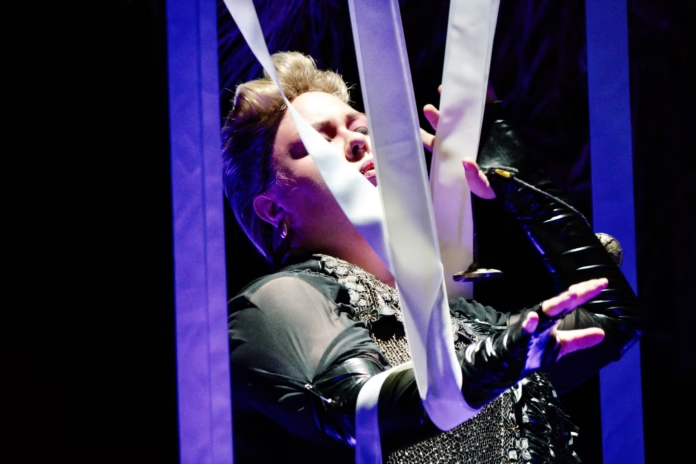Having just seen/heard Long Beach Opera’s staging of El Relicario de los Animales, I don’t have a clue what they’re talking about on their website when they call it “one of [Pauline] Oliveros’ most emotional scores,” as I gather this season’s second aleatory exercise care of Oliveros is based on little more than the composer’s intended orchestration, spatial arrangement of the musicians, and general suggestions for content based on animal themes for four movements. Emotional content? Nada.
But in a season explicitly dedicated to “Deep Listening” — “the term [Oliveros] used to name the driving philosophy and practice behind most of her later work,” says the program — projecting emotion onto the sound is beside (and maybe even counter to) the point. All that concerns us here is the aural and its presentation.
On that score, LBO’s second 2025 offering was a step up from their first in terms of both ambition and execution. Comprised of not only El Relicario de los Animales but also Thirteen Changes, which made expansive use of Los Angeles’s indoor/outdoor Heritage Square Museum, even those of us looking forward to the next time LBO fully stages a traditional “opera” likely came away satisfied with the spectacle.
The Heritage Square Museum “explores the settlement and development of Southern California during its first 100 years of statehood through historic restoration and preservation” by way of the preservation/restoration of eight “historically significant” Victorian Era buildings from Los Angeles neighborhoods relocated to a sylvan nook in Montecito Heights.
From one end of the museum grounds, two dozen black-clad figures slowly processed west, where, after what might have been a wordless blessing, a single violinist/vocalist stepped up on the porch and began to improvise on the basis (presumably, considering the program insert cards showing the score Thirteen Changes) of the instruction, “Standing naked in the moonlight—Music washing the body.” After a short while, the remaining 23 musicians began back east, where the process was more or less repeated as they reached pre-ordained spots (usually the houses). “Solar winds scorching the returning comet’s tail,” “Elephants mating in a secret grove,” “Songs of ancient mothers among awesome rocks” — these ideas may have existed in the musicians’ heads, but without the “score” we would never have known.
But if your sole concern is sound, who cares? And regardless of how much or little each individual performance amounted to, all dozen or so (the title and card suggest 13, but the little map shows 11 spots) taking place simultaneously spread across nine time-warped acres made for one lovely sound-art installation.
Called by the sound of the conch, gradually the performers made their way back east and entered the 137-year-old church, where they arranged themselves in four diamond formations centered on Jamie Barton, the main vocalist and conductor of sorts for El Relicario de los Animales.
What transpired seemed intended as a sort of protohuman religious ritual, with Barton a sort of ur-shaman leading her pre-linguistic congregation from nearly silent contemplation through waves of wild ecstasy riding heartbeat rhythms. It may have gone on too long (when doing a piece of aleatory music, it’s usually best not to fall back on a conceit you’ve already explored), but otherwise I would think it succeeded on its own terms, were it not for that pesky bit on the LBO website about emotionality (whatevs to that).
Although I remain in the camp that hopes Long Beach Opera will eventually return to more of what most of us think of as opera (costumes, arias, a score that’s got actual musical notation), if instead they’re going to do (what I call) sound art (operatic as it may be), this was a satisfying outing.



